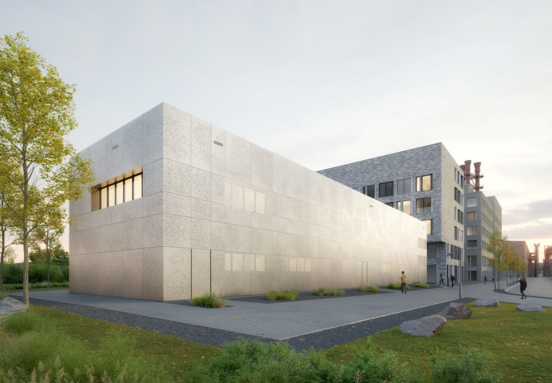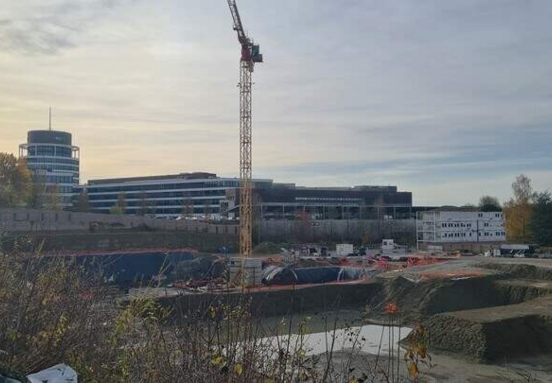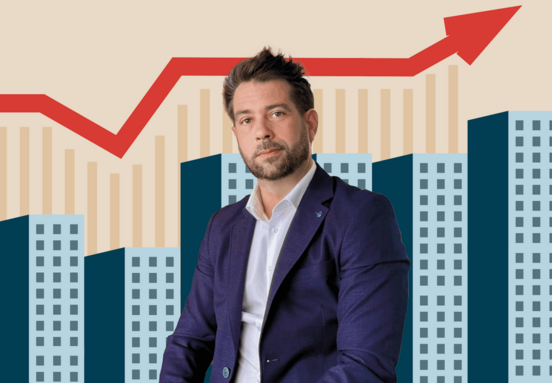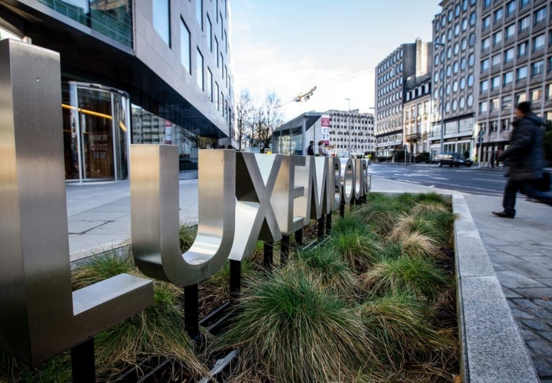A new record year
With approximately 357,000 square meters of occupancy in 2021, the office real estate market is registering a second consecutive record year on Luxembourgish soil. However, these figures need to be nuanced in light of the numerous pre-leases recorded and the significant weight of European institutions and other public administrations over the past year. Moreover, Luxembourg has one of the lowest vacancy rates in the European Union at 3.6% in 2021 compared to 4% in 2020. Focus on the 2021 figures and the latest trends in an evolving office real estate market, between geographic needs to adapt to smoother mobility and construction and development needs to follow an increasingly present ESG trend in the strategies of companies and institutions.
2021 marks a new record year in terms of transactions for the office real estate sector. JLL Luxembourg recorded an occupancy of 356,993 square meters over the past year, representing an 11% increase from 2020, the previous record year. 77% of this total is made up of existing buildings, with 23% relating to ongoing projects.
Many notable developments in the office real estate segment are to be highlighted in 2021. First of all, there has been a significant increase in subletting: 13,079 square meters, more than double that of 2020. "This reflects the fact that some occupants with ongoing leases have surplus space for their activities and offer part of it to other companies. We can clearly see in this trend one of the consequences of teleworking," said Lofti Behlouli, Director of Office Agency at JLL Luxembourg. "Subletting is a trend that can be attractive. However, it should be noted that, in some cases, this requires adjustments that can be complicated to implement and therefore potentially costly," reminds Muriel Sam, Head of Development for Immobel Luxembourg. Reconfiguring an open space involves many issues related to occupational health and safety or cybersecurity, for example.
If we segment occupancy by sector, we can see that European institutions accounted for the largest share of transactions, with a total surface area of around 150,000 square meters (42%). Once again, this is an absolute record. The movements recorded by two major players explain this figure: the European Parliament, which now occupies its new seat, KAD II, in Kirchberg (127,000m²) and the Publications Office, which has taken up residence in the Mercier building (18,200m²), in the Gare district.
Rethought workspaces
While the office real estate market has shown some resilience in Luxembourg, it will still need to evolve significantly to meet the challenges generated by the health crisis.
"The pandemic has accelerated trends that were already emerging before the crisis. I'm thinking in particular of 'hot desking' (nomadic office, ed.), remote work or decentralized offices. However, these two years of pandemic and forced telework have highlighted the fact that remote work is not ideal. The office is essential for creating a corporate culture, making people productive and creative. To see this, one only needs to look at the offices of IT companies in Silicon Valley, the very ones that invented telecommunications tools," explains Muriel Sam.
In order to identify new work priorities, JLL conducted an international survey. "The quest for a better balance between private and professional life comes in first place in expectations (66%)," says Emna Rekik, head of tenant representation at JLL. "Next come the guarantee of a comfortable salary (49%), working for a company that ensures the well-being and mental and physical health of its employees (46%), and the need to find meaning in one's work (44%)."
To meet these new needs, companies will therefore have to adapt their workspace. "According to our survey, the first expectation of employees is to have offices connected to nature. This can include gardens, outdoor spaces or shared gardens," explains Pierre Joppart, head of work dynamics at JLL Luxembourg. "Secondly, employees want places to isolate themselves, to take private calls, for example. They then expect to have social spaces (coffee areas, lounges, terraces, etc.) and learning and development spaces, to take courses, for example. Finally, they aspire to be able to take advantage of collaborative spaces, such as thinking rooms."
Luxembourg institutions were a little less present than last year. They represent only 16% of total transactions compared to 27% last year.
The private sector, which represents 42% of total transactions in 2021, was once again driven by the occupation or pre-leasing of finance players: BGL BNP Paribas, which pre-leased an 18,300m2 extension of its current headquarters on the outskirts of Kirchberg, Société Générale, which signed for 17,303m2 in the Icone project in Belval, and finally Union Investment, which occupies its new 10,700m2 premises at the airport.
Regarding the evolution of neighborhoods, the weight of Kirchberg in total occupation rose from 25% to 45%. While Belval's share rose to 9% (from 3% in 2020), City Belt's share fell from 23% to 8% in 2021.
Last year's vacancy rate, at 4%, contracted over the past year to reach 3.6%. "This decrease in the vacancy rate is mainly due to high pre-leasing and pre-sale rates as well as low supply in Luxembourg," explains Lofti Behlouli, who also notes that Luxembourg has one of the lowest vacancy rates in Europe. On average, in the European Union, this rate is more than twice as high (7.6%). "This low vacancy rate compared to other European capitals limits fluctuations in square meter prices. For institutional clients who have hundreds of millions of euros to invest in real estate, Luxembourg becomes more attractive compared to places where fluctuations are more significant, such as Paris, Brussels or Frankfurt. If real estate is generally a safe haven, in Luxembourg, it is even more so," says Muriel Sam."
The rise of "green" buildings
Among the new development trends in Luxembourg, the increasing number of buildings with a green certification is also notable. According to statistics collected from the BREEAM and DGNB associations - two organizations that provide green certifications - approximately 800,000 square meters of office space are now certified "green" in Luxembourg. This represents 18% of the current office stock. However, this trend is expected to amplify in the coming years, as out of the approximately 385,000 square meters currently under construction, 313,000 square meters have already been requested for green certification.
As a symbol of this interest in "green buildings," more and more certification organizations and labels are developing in the market (BREEAM, DGNB, HQE, CO2-Neutral, WELL, etc.). But does being certified imply increased attractiveness for occupants, or even higher rents? "It is certain that green certifications have become essential to meet the challenges of stakeholders in terms of CSR. The green seal of approval is an integral part of an occupant's selection criteria. The link between certification and rent is not direct, the analysis is mainly focused on the total cost of occupancy, from the occupant's point of view," explains Lofti Behlouli.
Source: Paperjam published on March 8, 2022.







